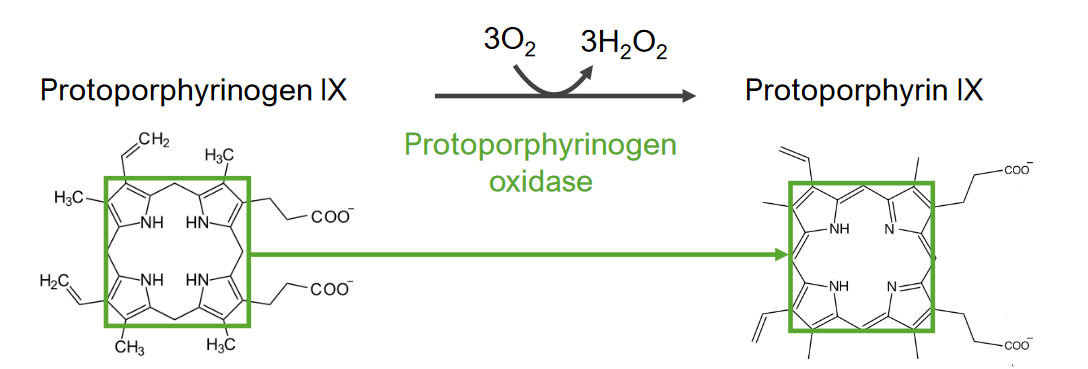Playlist
Show Playlist
Hide Playlist
Hemoglobin and Movement of Oxygen: Introduction
-
Slides Hemoglobin Biochemistry.pdf
-
Reference List Biochemistry.pdf
-
Download Lecture Overview
00:01 One of the most important and most interesting proteins in our body is hemoglobin, the molecule that carries oxygen throughout our tissues and supplies the oxygen that our cells need to be alive. 00:13 Now, animals have very widely varying needs for oxygen. 00:17 They're very different from plants for example. 00:20 The demand for oxygen can change in seconds. 00:23 The basal needs of oxygen that are cells have are significant, and so we can't rely on oxygen that gets through our tissues by diffusion like insects can do. 00:34 Exercise, fight-or-flight issues and other things like exercise add to the need that our body has for oxygen. 00:42 Now, the reason oxygen is important is because ATP, the sort of gasoline of our body, ATP energy is produce 15 times more efficiently when oxygen is present than when oxygen is absent. 00:56 That is anaerobically. 00:57 So respiration using oxygen is much more efficient that fermentation which is what happens during the anabolic or the anaerobic process. 01:07 Efficient, adaptable oxygen deliver is therefore essential and fortunately we have that in the form of hemoglobin. 01:15 Now, hemoglobin has a structure like you can see on the left. 01:19 It has four individual polypeptide chains: two identical units shown in blue and two identical units shown in red. 01:27 These are known as alpha 2 beta 2: two alpha units and two beta units. 01:32 And they're very, very similar in structure, but they're not identical. 01:37 Each of those individual units of hemoglobin contains a molecule known as heme. 01:42 And heme is the portion of the hemoglobin molecule that carries the oxygen. 01:46 It actually physically holds onto it using an atom of iron. 01:51 Myoglobin is a related compound. 01:53 Structurally, it's very similar to the one of the four units of hemoglobin. 01:58 In fact, it's similar to all four because the betas and the alphas are very similar to each other. 02:03 But myoglobin and only having one unit, only has one heme. 02:08 And that gives myoglobin some very different properties than hemoglobin even though the proteins themselves are very similar. 02:15 Now, each heme unit in both hemoglobin and myoglobin binds one molecule of oxygen. 02:22 Hemoglobin can therefore bind a total of four and myoglobin can only bind a total of one molecule of oxygen. 02:29 The heme unit that I've just described is what we describe as a prosthetic group. 02:34 A prosthetic group in a protein is non-amino acid that is part of a protein that helps expand the function of a protein. 02:43 Now in the case of the hemoglobin, the heme unit contains at its very center an atom of iron. 02:49 This is known as ferrous iron or what we call iron plus two. 02:53 If we have iron plus three, which is known as ferric iron, the heme will not be functional and will not carry oxygen. 03:01 So it's very important that we maintain our heme with the iron in the ferrous state because only the ferrous form will bind that oxygen. 03:11 Now I want to spend a little bit of time talking about the structure of that heme group because it turns out that the structure of that heme group is essential for the really interesting function that hemoglobin performs. 03:24 Now on the last slide I showed you, the hemoglobin face forward looking like this with the iron in the center. 03:30 This slide shows the same molecule of heme but now has rotated so that it's flat. 03:35 And we see the heme iron in the very center of that structure. 03:40 Beneath that, we see a molecule labeled His, H-I-S and that His stands for histidine. 03:46 It's one of the amino acids in the hemoglobin protein. 03:50 And by the way, the protein part of hemoglobin is called globin. 03:54 So the globin contains this histidine. 03:57 And this histidine is covalently linked to the iron atom in the middle of that heme. 04:03 Now this slide shows what happens when oxygen comes in and binds to that iron in the center of the heme. 04:10 We can see oxygen coming in with the arrow. 04:12 And the oxygen is shown in the figure on the right as two green balls. 04:16 That's molecular oxygen or two atoms of oxygen held together. 04:20 The binding of oxygen to that iron atom in the middle of the heme causes a very slight change in the position of that iron atom. 04:29 As you can see in the figure, the iron atom is moved upwards very slightly. 04:33 Well, since the iron atom is attached to the histidine amino acid below it, that means that the histidine is also lifted a very small distance. 04:42 Well, histidine is not there by itself. 04:44 It's attached to the rest of the globin protein part of hemoglobin. 04:48 That means that globin subunit, either the alpha or the beta, and this happens for both, so it doesn’t happen for each one. 04:55 What happens is that globin subunit gets changed very slightly in shape. 05:01 And that change in shape has dramatic effects on the hemoglobin molecule as a whole.
About the Lecture
The lecture Hemoglobin and Movement of Oxygen: Introduction by Kevin Ahern, PhD is from the course Amino Acid Metabolism.
Included Quiz Questions
Which of the following is true regarding hemoglobin?
- It is important to animals with widely varying oxygen needs.
- It can only carry one oxygen molecule at a time.
- It provides oxygen for less efficient ATP synthesis.
- It contains magnesium in the heme group.
- It is made up of two alpha subunits and one beta subunit.
Which of the following is true regarding hemoglobin heme?
- It binds oxygen in the Fe++ form.
- It has ferrous iron in the methemoglobin form.
- It is comprised of amino acids.
- Ferric iron is responsible for oxygen binding.
- Heme has five subunits.
Which of the following is true regarding heme?
- The iron in heme is covalently bound to histidine in a globin subunit.
- The binding of oxygen raises the entire heme group.
- The iron is bound by four nitrogens of the protoporphyrin ring and by the cysteine below.
- The protoporphyrin ring is oval-shaped in the absence of oxygen.
- Oxygen has no effect on the position of the iron in the heme group.
Customer reviews
5,0 of 5 stars
| 5 Stars |
|
1 |
| 4 Stars |
|
0 |
| 3 Stars |
|
0 |
| 2 Stars |
|
0 |
| 1 Star |
|
0 |
The professor was very clear and his tone was lively :)




